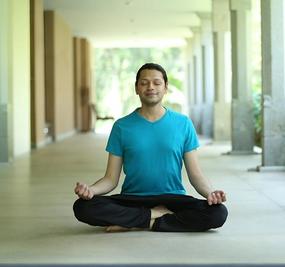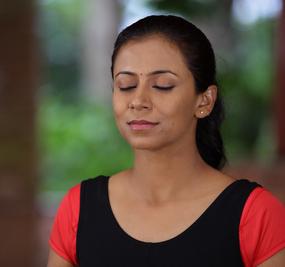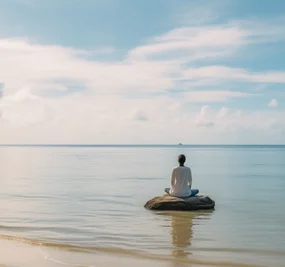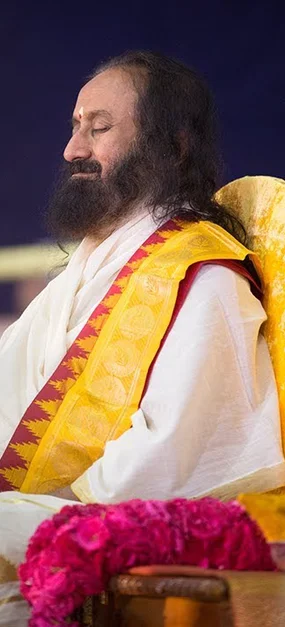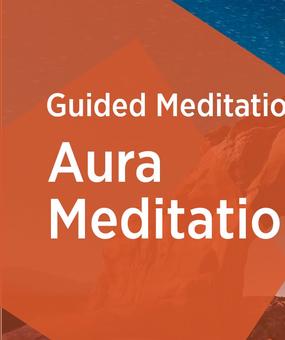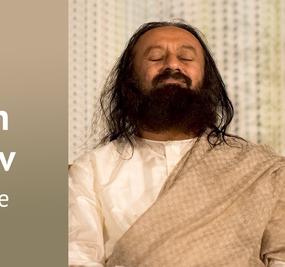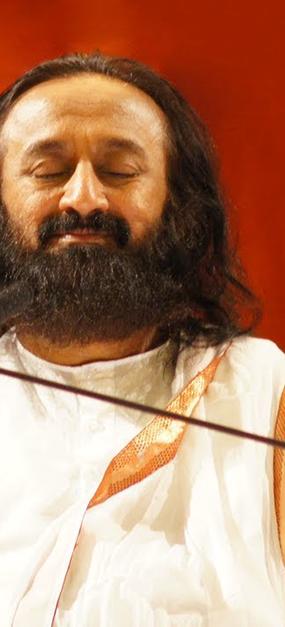What is Meditation?
Meditation is a journey from sound to silence. It is a skill to calm your mind and realize the abundant source of energy within you. In order to start meditating, you don’t have to resort to being a recluse in the Himalayas or undergo severe penance, but you just need the right guidance to learn the skill to calm your mind. Doing meditation daily helps you tap into the inner energy you never knew existed.
Meditation is not concentration. It is de-concentration. To do any work, you need concentration, but to relax and expand, you don’t need concentration. Relaxation is the mother of concentration, and so if you relax well, you can concentrate better.
Why Should You Meditate?
Meditation creates positive and harmonious energy around us. It improves health. You can easily find a lot of research on how meditation helps in hypertension, diabetes, heart problems, skin problems, nervous system problems, and a number of other problems. Apart from the health benefits, meditation improves concentration. It helps one to be in the present moment. Meditation can help one to keep a pleasant mood and be happy.
What is the need for meditation in today’s society, in today’s life? The more responsibility you have in your life, the greater the need for meditation. The busier you are, the less time you have, the more work you have, the more desires you have, the more ambitions you have. All the more you need to be meditating. Because meditation not only relieves you of stress and strain, it also enhances your ability to face challenges. It keeps your body in shape, helps your nervous system, helps your mind, improves your alertness, improves your perception, and helps you to express yourself properly. E.g., research has shown meditation lowers cortisol (the stress hormone), helping reduce anxiety and depression symptoms [Harvard Health, 2014] [UC Davis, 2013]
Meditation has multiple benefits for beginners and experienced meditators. It keeps you physically fit and healthy, mentally focused and sane. Intellectually, it brings such sharpness, keenness of attention, awareness, and observation. Emotionally, you feel lighter, softer and purer. You can let go of all the past garbage. It creates positive vibrations around you, influencing your behavior with others, and others’ behavior with you. Meditation gives the deepest rest in the shortest time. Even first-time meditators show measurable benefits: research shows that even a single 15-minute guided breathing session can reduce negative mood and increase emotional resilience in people new to meditation. [Arch & Craske 2006]
How Do You Prepare to Meditate?
There are many questions when we sit for meditation. How to sit, where to sit, when to sit, and so on. Then when you sit, complaints can come up – my body aches, my back aches, my leg aches. What do I do? These are some general questions.
How do I position my back and head for meditation?
Don’t rest your head as far as possible. But if you feel uncomfortable, you want to rest your head, you can go ahead. If you have some physical challenges, illnesses or some discomfort, then you do it. But it’s better not to rest your head because it may take you to sleep more than meditation.
What do I do once meditation starts?
- You begin with your spine erect (with the help of a back rest) and later on, you should just let go and say, suppose your body wants to relax, you should let it happen. At the same time we don’t meditate lying on the sofa or stretching your legs. Then you are not meditating.
- So sit comfortably easily, and close your eyes and just listen to the guided meditation. And when the instruction comes, keep your spine erect. You start with your spine erect, and then you let go. There is always this instruction. Let go. Totally. Let go. This instruction is the most crucial instruction in meditation.
When should I meditate?
It’s better to meditate two to three hours after a meal or before a meal. Just before a meal, you can do it. But if you have a full stomach, you say, I’m going to sit for meditation. It’s not going to happen.
What do I do when I get too many thoughts during meditation?
That’s another challenge that you have or another issue that comes here is you sit, and then you feel restless. So many thoughts come to the mind. What do you do? You just embrace the thoughts. In the first one or two days, it’s like that. Once you move on, you will find on the third day, fourth day, fifth day, every day, your meditation will keep getting better and better and better. Even if some days your meditation is not so good. Never mind why it feels like that. Because some stress is getting out of the body, right? It’s like the dust that was from underneath the carpet is coming out when you clean after a long time.
Meditation is the delicate art of doing nothing.
Gurudev Sri Sri Ravi Shankar
Types of Meditation for Beginners
The state of meditation is the same, but there are at least five different channels for meditation:
- Body: The first is through yoga and physical exercise. When our body does certain postures, with a certain rhythm, the mind slips into meditation.
- Breath: The second is through breathing techniques and ‘pranayama’. The mind becomes quiet and still, and you can slip into meditation effortlessly.
- Senses: The third is through any sensory pleasure — sight, sound, taste, smell, or touch. Being 100 per cent engrossed in a particular sensory object brings you to a state of meditation.
- Emotions: The fourth way is through both positive and negative emotions. When you feel utterly hopeless or very angry, you say, ‘I give up!’ It means, ‘This is it. I can’t take it anymore.’ During those moments, if you don’t slip into frustration or depression or violence, you will find that there is a moment where the mind stands still.
- Intellect: The fifth is through the intellect, knowledge, and awareness. This is called Jnana Yoga. When you sit and know that this body is made up of billions of cells, something gets stimulated deep inside. The context of life immediately changes when you become aware of the magnanimity of the universe: Who are you? What are you? Where are you? How are you in reference to the unfathomable, infinite universe? Some shift happens within you. And you are in meditation.
Any of these types of meditation is useful even for beginners. Randomized trials with novices practicing short-term meditation training demonstrated better stress regulation and attentional control compared to relaxation alone [Tang 2007].
Most Important Secret of Meditation
To meditate, you just need to know how to relax. If you are on a massage table, you let the masseur take care of you. Similarly, in meditation, you do nothing. Let nature or the spirit take care of you. What would help to go into meditation are three things.
- One is for the next ten minutes, I have to say to myself, I want nothing. You can have all your wants later on, but ten minutes I say, I want nothing.
- Second one is for ten minutes, I do nothing. Next ten minutes, we do nothing.
- Third thing is, I am nothing. You could be somebody a little later, but during meditation, you say, I’m nothing. I’m nobody. I’m not a lawyer, doctor, whatever.
So I want nothing. I do nothing. I am nothing. These three ideas will help us to calm our mind and slip into a relaxing meditation.
Common Myths and Challenges with Meditation
Meditation Is Concentration
Meditation is de-concentration. Concentration is a benefit of meditation. While concentration requires effort, meditation is an absolute relaxation of the mind. Meditation is letting go and when that happens, you are in a state of deep rest. When the mind relaxes, we can concentrate better.
No Thoughts During Meditation
During meditation, thoughts come. Let them come. Take a couple of deep breaths and every time you become aware, thoughts are coming to your mind. You come back, you remember, no, I’m meditating, you let go and follow the instructions. That’s why in the beginning, we need guided meditation. Till you get to a point where you don’t need any outside instruction, you just sit, and then you start sinking deep down.
Meditation is for Old People
Meditation has become very popular today. When Gurudev started teaching meditation 42 years back, yoga and meditation were thought to be not for the mainstream people. One third of world’s population are practicing yoga and meditation.
Meditation helps become strong. It gives you intuitive ability. It helps you to build your career and create happiness and enthusiasm. And this is needed when you are young! You don’t want to postpone being happy, right? You cannot say I’ll be happy when I am 60 or 70.
Read more myths about meditation in detail here.
Step by Step Guide to Meditation
-
Choose a convenient time
Choose a time when you know you are not likely to be disturbed and have the freedom to relax and enjoy. The hours of sunrise and sunset while nature transitions between day and night are also ideal for meditation.
Similarly, choose a quiet and peaceful environment where you can sit and meditate without distractions. It could be a quiet room in your home, a soft spot in nature, or even a meditation center. Such a place can make meditation for a beginner more enjoyable and relaxing. Make sure your meditation room is well-ventilated and there is some fresh air coming in the room.

-
Sit in a comfortable posture
Sit comfortably and easily. Keep your shoulders relaxed. You don’t need to sit with a very straight back. You can sit with a backrest too. Start with your spine erect and then let go. Letting go is the most crucial instruction in meditation.
Avoid lying down on the sofa or with your legs outstretched during meditation. You cannot meditate that way. Don’t rest your head as far as possible. But if you feel uncomfortable and you want to rest your head, you can go ahead. If you have some physical challenges, illnesses or discomfort, then also you can do it. But it’s better not to rest your head because it may take you to sleep more than meditation.

-
Keep a relatively empty stomach
Meditate before a meal or two to three hours after a meal. Too much food makes you feel dull. If you meditate just after a meal, either you will have indigestion or you will not be able to meditate. You’ll go to sleep. Eat in moderation. No need to fast either – just the right amount of food.

-
Start with a few warm-ups
Warming up before meditation brings your attention to the present and prepares your body and mind for meditation. A few warm-up exercises or sukshma yoga before meditation help improve circulation, remove inertia and restlessness, and make the body feel lighter. This step will help you sit steadily for a longer time.
Pranayama helps enhance the prana or vital life force in the body. It prepares you for meditation. It is recommended to practice deep breathing or nadi shodhan pranayama before and after meditation. Practicing pranayama after meditation helps for smooth transitioning and to clear any toxins released during meditation.
-
Drop your intentions
A strong tendency to keep doing something, whether important or unimportant, becomes an impediment to meditation. All intentions, good or bad, trivial or important, need to be dropped for meditation to happen. Dropping all intentions even for a moment brings you in touch with the Self – that instant meditation happens. While you sit for meditation you have to let the world be the way it is.
-
Don’t judge your thoughts
If thoughts are coming, never mind. When you realize it, you again come back to your centre. Some irrelevant, absurd thoughts may come and go – it is all part of stress release. You may get some brilliant thoughts or some very bad thoughts, don’t judge at that time. Don’t get excited, just relax. Some people get ideas, some people can see some visions, some colours, some experience: some may smell some fragrance, or feel something – any of the 5 senses – it’s all good. Simply continue with your meditation.
-
Kick the world away like a ball
From the moment you wake up in the morning, you are always with people and your mind is caught up in worldly thoughts. When you meditate, close your eyes and kick the world away like a ball. During the day be completely attached to your work, don’t try to detach yourself. But when you sit for meditation, then totally detach yourself.

-
Do not concentrate
Improved concentration is a result of regular meditation. Yet, meditation is not concentration. Meditation is the simple art of doing absolutely nothing, not even thinking, so you don’t concentrate but you de-concentrate, you relax completely. If you are asked to take your attention to something while practising a guided meditation, just do it gently. Remember, the whole process is effortless.
-
Don’t ‘do’ anything
Meditating should be like lying on a massage table. So when you are taking a massage, you just lie on the table and the masseur takes care of everything. In the same way, when you sit for meditation, know it will be done for you. You wanting to do something in meditation is the biggest problem. There is a teacher, guide or Guru who does the work for you.
Use this 10-minute beginner meditation to get started if you don’t have any other meditation practice. Even brief daily practice matters—researchers found that two weeks of meditation training reduced mind-wandering and improved GRE test scores in university students new to meditation [Mrazek 2013].

-
Open your eyes slowly and gently
As you come to the end of the meditation, don’t be in a hurry to open your eyes or move your body immediately. Instead, become aware of yourself and your surroundings and open your eyes gradually. Then slowly move your body, and you are ready for the day.
Try this Guided Meditation for Beginners
The Art of Living’s Sahaj Samadhi Meditation is a specially crafted program to help you tap into your unlimited potential by diving deep within yourself.
Research
- Harvard Health. Mindfulness meditation may ease anxiety, mental stress.
- UC Davis News. Mindfulness meditation associated with lower stress hormone.
- Tang YY, Ma Y, Wang J, et al. Short-term meditation training improves attention and self-regulation. Proceedings of the National Academy of Sciences, 2007.
- Mrazek MD, Franklin MS, Phillips DT, Baird B, Schooler JW. Meditation training improves working memory capacity and GRE performance while reducing mind wandering. Psychological Science, 2013.
- Sri Sri Institute for Advanced Research






